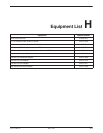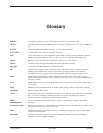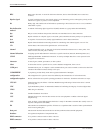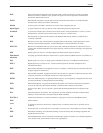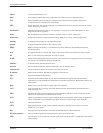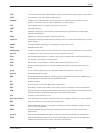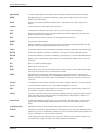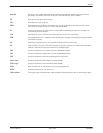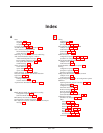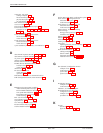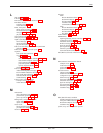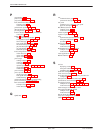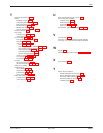
ACCULINK 3163 DSU/CSU
Glossary-6 March 1999 3163-A2-GB20-10
A measure of the number of ones (marks, pulses) in relation to the total number of bits transmitted.
Quasi-Random Signal. A test pattern simulating a random pattern of digital ones and zeros used to
simulate normal transmission.
Random-Access Memory. Read/write memory that is volatile and loses its contents when power is
removed.
A part of the device’s memory that holds stored values.
An initialization of the device that occurs at power-up or in response to a reset command.
Request for Comments. One of the documents published by the Internet Engineering Task Force that
describe Internet protocols and policies.
Routing Information Protocol. A protocol for exchanging routing information.
An 8-position modular connector.
Repeater LoopBack. Loops the signal being sent to the network back to the DTE Drop/Insert and data
ports after it has passed through the framing circuitry of the device.
A device that connects LANs by dynamically routing data according to destination and available routes.
An Electronic Industries Association’s standard for a low-speed, 25-position, DCE/DTE interface.
An Electronic Industries Association’s standard for a general-purpose, 37-position, DCE/DTE interface.
Request to Send. A signal from the DTE to the device, indicating that the DTE has data to send. V.24
circuit 105.
Receive. To obtain transmitted signals.
Receive Clock. V.24 circuit 115.
Received Data. Pin 3 of the EIA-232 interface that is used by the DTE to receive data from the modem.
Conversely, the modem uses Pin 3 to transmit data to the DTE.
Shared Diagnostic Control Panel. A feature that allows carrier-mounted devices to share the same
diagnostic control panel. Installed into one COMSPHERE 3000 Series Carrier, it controls and monitors
the devices in all the carriers in the cabinet. A single SDCP can control up to 8 carriers, with a total of
128 devices.
A test that checks most hardware components when power is applied to the device or a reset is initiated.
A device that offers a specific service, such as database management, to a client.
Severely Errored Seconds. Usually defined as a second during which a specific number of CRC errors
was exceeded, or an OOF or other critical error occurred.
A portion of a network, which may be a physically independent network segment, that shares a network
address with other portions of the network and is distinguished by a subnet number. A subnet is to a
network what a network is to an internet.
A number that identifies the subnet portion of a network address. The subnet mask is a 32-bit Internet
address written in dotted-decimal notation with all the 1s in the network and subnet portions of the
address.
Data transmission that is synchronized by timing signals. Characters are sent at a fixed rate.
Transmission Control Protocol/Internet Protocol. The dominant protocol suite in the worldwide Internet,
TCP allows a process on one machine to send data to a process on another machine using the IP. TCP can
be used as a full-duplex or one-way simplex connection.
Virtual terminal protocol in the Internet suite of protocols. Allows the user of one host computer to log
into a remote host computer and interact as a normal terminal user for that host.
pulse density
QRSS
RAM
register
reset
RFC
RIP
RJ48C
RLB
router
RS-232
RS-449
RTS
RX
RXC
RXD
SDCP
self-test
server
SES
subnet
subnet mask
synchronous data
TCP/IP
Telnet




